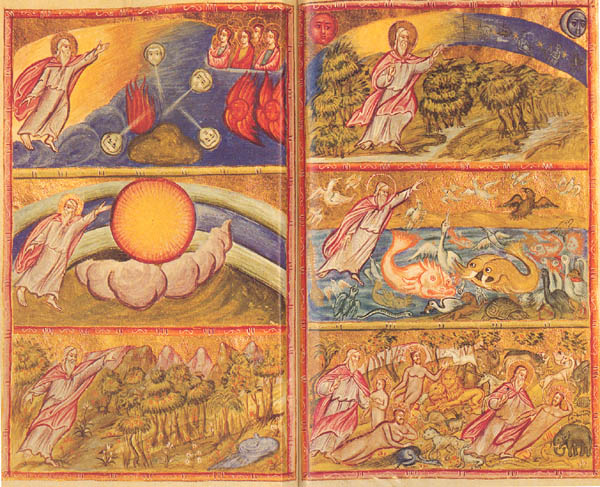Image Details

David Harris
The creation’s six days, as depicted in a 17th century Armenian Bible, preserved in the Armenian Patriarchate, Jerusalem. The first panel, upper left, shows God commencing to create the universe from chaos. In the second panel, middle left, the orb apparently represents God’s command “Let there be light” (Genesis 1:3), actually a part of the first day’s work; while the arch in the background seems to be the “firmament in the midst of the waters” (Genesis 1:6). The creation of the Earth and its vegetation appears in the bottom left panel. On the fourth day, upper right panel, God made the stars, shown in the blue band as some of the zodiacal constellations, as well as the sun and the moon, seen in the panel’s upper corners. The fifth panel, middle right, vividly realizes God’s creation of the creatures in the sea and of the birds who “fly above the earth across the firmament of the heavens” (Genesis 1:20). Finally, God made the creatures of the earth, including mankind, on the sixth day, lower right. Among the animals shown in the sixth panel is the mythical unicorn, which has a single, long horn jutting from its forehead.
But did God really finish the work of the Creation in six days? According to the Hebrew Bible, “On the seventh day God finished the work which He had been doing” (Genesis 2:2). At other places in the Pentateuch (the Bible’s first five books), however, we are told that God finished the Creation in six days. How can we explain this apparent contradiction? The accompanying article examines the attempts to resolve this longstanding problem of exegesis.
